-
- PCB TYPE
- PRINTED CIRCUIT BOARD PROTOTYPE ALUMINUM PRINTED CIRCUIT BOARD R&F PCB FPC HIGH FREQUENCY PCB HIGH-TG PCB HEAVY COPPER PCB HDI PCB PCB FOR LIGHTING METAL CORE PCB
time:Jul 05. 2025, 10:25:22
In the ever - advancing realm of electronics, printed circuit boards (PCBs) act as the backbone, facilitating the connection and operation of countless electronic components. Among the diverse array of PCB technologies, aluminum PCBs have emerged as a transformative force, reshaping the way heat is managed and electronics are designed. Their unique attributes make them a preferred choice across multiple industries, from consumer gadgets to high - end aerospace systems. This article delves deep into aluminum PCBs, exploring their material science, design intricacies, manufacturing processes, quality assurance measures, real - world applications, and market trends.
Material Science Underpinning Aluminum PCBs
Aluminum Alloys: The Foundation
The choice of aluminum alloy for PCBs is pivotal, as it significantly impacts the board's overall performance. Aluminum, inherently known for its favorable thermal conductivity among common PCB materials, comes in various alloy forms, each tailored to specific application needs.
Pure aluminum, while boasting excellent heat - transfer capabilities, may fall short in terms of mechanical resilience in certain demanding scenarios. Alloyed aluminum, such as the 6xxx series incorporating magnesium and silicon, offers a more balanced solution. These alloys enhance the mechanical strength of the PCB substrate, enabling it to endure mechanical shocks, vibrations, and fluctuating temperatures typical in industrial and automotive settings. Moreover, the addition of alloying elements boosts corrosion resistance, ensuring reliable operation even in harsh, chemically - laden or outdoor environments.
Dielectric Layers: Balancing Insulation and Heat Transfer
The dielectric layer in aluminum PCBs serves a dual - critical function: providing electrical insulation between the conductive copper layers and the aluminum base, while also facilitating efficient heat transfer.
Polyimide - based dielectrics are highly regarded in high - temperature and high - frequency applications. Their remarkable thermal stability allows them to maintain structural and electrical integrity even when exposed to elevated temperatures, making them ideal for power - hungry electronics like server farms and high - performance computing clusters. Their low dielectric loss property is crucial in minimizing signal degradation within high - speed circuits, which is essential for modern communication technologies such as 5G networks and advanced radar systems.
On the other hand, ceramic - filled epoxies present a cost - effective alternative with enhanced thermal conductivity. By integrating ceramic particles into the epoxy matrix, the heat - transfer efficiency of the dielectric layer is substantially improved. These materials find extensive use in consumer electronics, LED lighting fixtures, and industrial control panels, where a harmonious balance between electrical insulation and thermal performance is required.
Copper Layers: Conducting Power with Precision
Copper, renowned for its low electrical resistance, is the standard material for the conductive layers in aluminum PCBs. This inherent property ensures seamless power transmission to electronic components, minimizing power losses and reducing the potential for heat generation due to electrical resistance.
The thickness of the copper layers is meticulously determined based on the circuit's current - carrying capacity. In high - power applications, thicker copper layers are employed to lower resistance and prevent overheating. To further enhance the durability and functionality of the copper layers, various surface treatments are applied. Treatments like electroless nickel immersion gold (ENIG), electroless nickel electroless palladium immersion gold (ENEPIG), and organic solderability preservatives (OSP) safeguard the copper from oxidation, improve solderability, and guarantee long - term, reliable electrical connections.
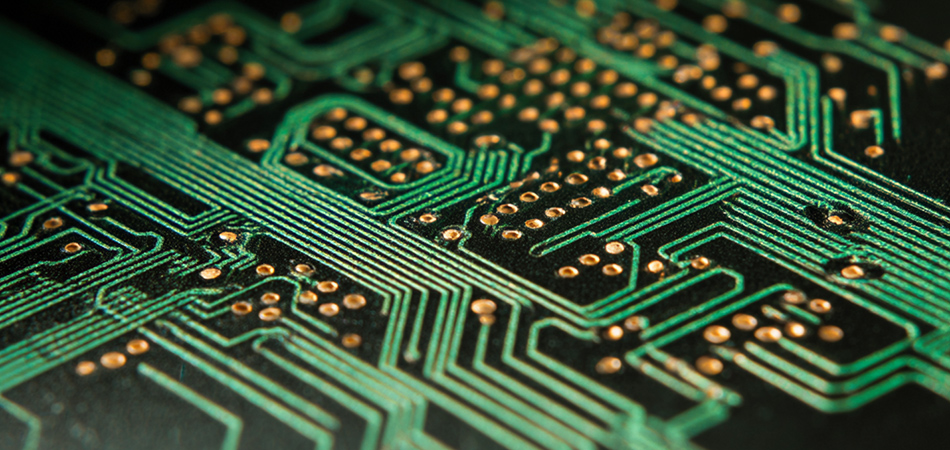
Designing Aluminum PCBs for Optimal Performance
Thermal Management: A Core Design Focus
One of the primary strengths of aluminum PCBs lies in their superior thermal management capabilities. Thermal vias play a central role in this aspect, acting as direct conduits for heat to flow from heat - generating components, such as integrated circuits, to the aluminum substrate, which functions as an effective heat sink.
Designing thermal vias requires a careful consideration of multiple factors, including their size, quantity, and spatial arrangement. A well - engineered thermal via layout can significantly enhance the heat - dissipation efficiency of the PCB. Additionally, integrating external heat - dissipating components, such as heat sinks and heat spreaders, further elevates the overall thermal performance. These components increase the surface area available for heat exchange with the surrounding environment, effectively preventing thermal - induced failures and ensuring components operate within optimal temperature ranges.
Electrical Design: Ensuring Signal Integrity
Electrical design is a critical aspect of aluminum PCB development, especially in high - speed and high - frequency circuits where maintaining signal integrity is non - negotiable. Proper trace routing techniques, impedance control, and shielding measures are employed to minimize signal interference and ensure accurate signal transmission. Designers must carefully consider factors such as trace length, bend radius, and the implementation of appropriate shielding methods to safeguard signal quality.
For power - intensive circuits, efficient power distribution is of utmost importance. Design efforts focus on reducing voltage drops across the PCB, minimizing electromagnetic interference (EMI), and ensuring proper isolation between different power domains. Multi - layer PCB designs are frequently utilized in complex applications to separate power and signal layers, thereby enhancing electrical isolation and reducing the risk of crosstalk between circuits.
Mechanical Design: Withstanding the Rigors
The mechanical design of aluminum PCBs must account for the mechanical stresses and vibrations they may encounter during operation. The selection of the aluminum alloy and its thickness directly influences the board's mechanical strength.
In applications where significant mechanical forces are present, additional reinforcement strategies may be implemented. This can involve the use of stiffeners to increase the board's rigidity or the selection of a more robust substrate material. The mounting and fastening methods of the PCB are also carefully engineered to ensure secure attachment while minimizing the transmission of mechanical stresses to the board itself, thereby enhancing its overall durability.
Environmental Design: Protection Against the Elements
Aluminum PCBs are often deployed in a wide variety of environments, many of which can be harsh and challenging. To ensure reliable operation, their design incorporates comprehensive protection against environmental factors such as moisture, dust, chemicals, and extreme temperatures.
Conformal coatings serve as a protective barrier on the PCB surface. Different types of conformal coatings, such as silicone - based coatings for high - temperature resistance and polyurethane - based coatings for chemical resistance, are selected based on the specific environmental demands of the application. Additionally, the design of the device enclosure, featuring tight seals and proper ventilation, plays a crucial role in preventing the ingress of contaminants while facilitating effective heat dissipation.
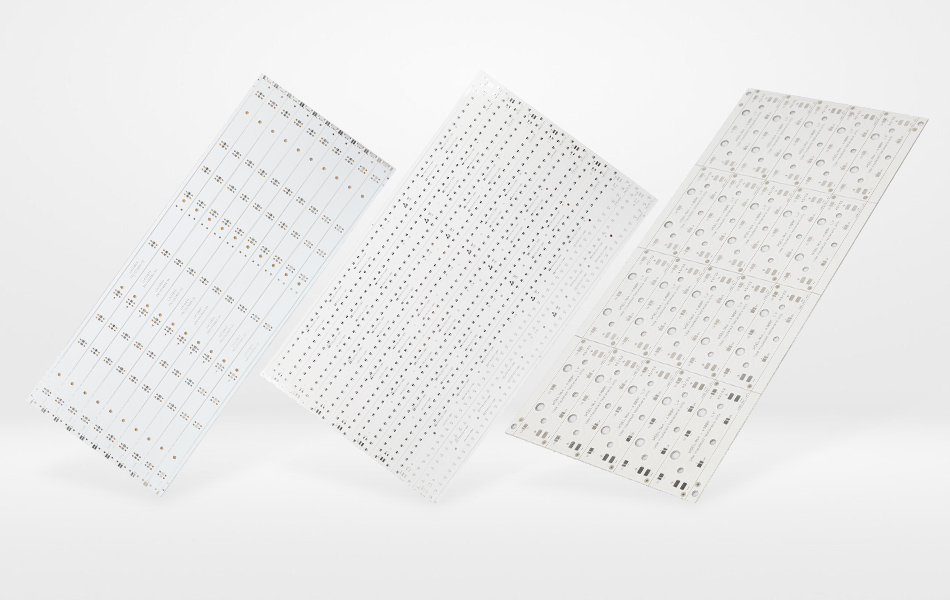
Manufacturing Processes of Aluminum PCBs
Drilling: Creating the Blueprint
The drilling process in aluminum PCB manufacturing is essential for creating holes for vias, component mounting, and other purposes. Two primary drilling techniques are commonly employed: mechanical drilling and laser drilling.
Mechanical drilling, a cost - effective option for larger holes, utilizes rotating drill bits to remove material from the PCB. While this method is widely used, it can give rise to issues such as drill bit wear, burr formation, and variations in hole size. To address these concerns, post - processing steps like deburring and hole - size calibration are typically carried out.
Laser drilling, on the other hand, offers unparalleled precision, making it ideal for creating small, intricate holes, such as microvias in high - density interconnect (HDI) PCBs. By using a focused laser beam to ablate the material, laser drilling produces clean holes with minimal burrs. However, it is generally more expensive and may have lower production throughput compared to mechanical drilling for large - scale manufacturing.
Plating: Establishing Electrical Connectivity
The plating process is fundamental for depositing a layer of copper to establish electrical conductivity on the PCB. It typically consists of two stages: electroless plating and electrolytic plating.
Electroless plating is the initial step, which deposits a thin, uniform layer of copper on non - conductive surfaces, such as the drilled holes. This chemical - based process occurs without the need for an external electrical current, providing a foundation for the subsequent electrolytic plating.
Electrolytic plating then builds up the copper layer to the desired thickness. In this process, an electrical current is passed through the PCB, causing copper ions in the plating solution to deposit onto the surface. Advanced plating techniques, such as pulse plating, can be utilized to enhance the quality of the copper layer by reducing voids, improving uniformity, and enhancing its mechanical properLamination: Bonding the Layers
Lamination is the process of bonding together the various layers of an aluminum PCB, including the aluminum substrate, dielectric layer, and copper layers. High - pressure lamination is a commonly used method, where the layers are stacked with adhesive films or prepregs (pre - impregnated materials) placed between them.
The stack is then subjected to high pressure and temperature in a laminating press, causing the adhesives to cure and firmly bond the layers. Proper lamination is crucial for ensuring the PCB's structural integrity, electrical performance, and thermal conductivity. Any defects in the lamination process, such as voids or delaminations, can severely compromise the board's functionality and reliability.Surface Finishing: Protecting and Preparing
Surface finishing of aluminum PCBs is essential for protecting the copper traces from oxidation and preparing them for soldering components. Several types of surface finishes are available, each with its own advantages and suitable applications.
Hot air solder leveling (HASL) is a traditional and cost - effective surface finishing method. It involves immersing the PCB in molten solder and then blowing off the excess solder with hot air, leaving a thin, even layer of solder on the copper traces. Organic solderability preservatives (OSP) provide a thin, transparent organic coating that protects the copper from oxidation. OSP is particularly well - suited for fine - pitch components and is gaining popularity due to its environmental friendliness. Electroless nickel immersion gold (ENIG) offers exceptional corrosion resistance and a smooth, flat surface, making it the preferred choice for high - reliability applications, although it comes at a higher cost compared to the other two options.
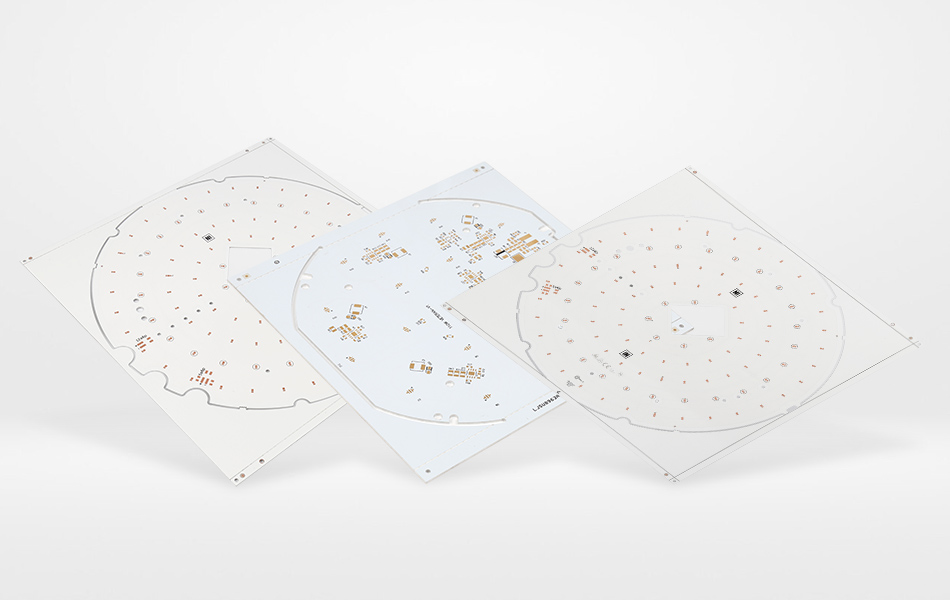
Quality Assurance in Aluminum PCB Production
Incoming Material Inspection: Starting with Quality
Before the manufacturing process commences, all incoming materials, including the aluminum substrate, copper foil, dielectric materials, and electronic components, undergo thorough inspection. The aluminum substrate is examined for flatness, purity, alloy composition, and mechanical properties. Copper foil is inspected for thickness consistency, surface roughness, and the presence of any defects.
Dielectric materials are rigorously tested for electrical insulation properties, thermal conductivity, and dielectric constant. Components are verified against their specifications and functionality. Only materials and components that meet stringent quality standards are approved for use in production, laying a solid foundation for the quality of the final PCB.
In - Process Quality Monitoring: Ensuring Consistency
During the manufacturing process, quality control measures are implemented at multiple stages to detect and rectify any potential issues promptly. After drilling, holes are inspected for size accuracy, roundness, and the presence of burrs. In the plating process, the thickness and uniformity of the copper layer are continuously monitored.
Lamination is carefully inspected to ensure proper bonding between the layers, with techniques like X - ray inspection employed to detect any hidden voids or delaminations. Surface finishing is also closely examined for coating thickness, adhesion, and the absence of defects. Automated optical inspection (AOI) systems are commonly used to rapidly and accurately identify visual defects on the PCB surface, enabling immediate corrective actions.
Final Testing: Verifying Performance
Once the aluminum PCB is fully manufactured, it undergoes a comprehensive suite of final tests to verify its functionality and reliability. Electrical tests are conducted to check for short circuits, open circuits, and impedance matching, ensuring that the PCB can effectively transmit electrical signals and power to the components.
Thermal tests, including thermal cycling and infrared thermography, are performed to evaluate the PCB's thermal management capabilities. Thermal cycling simulates real - world temperature variations to identify potential thermal - related failures, while infrared thermography provides a visual representation of the temperature distribution on the PCB surface, allowing for the detection of hotspots. Mechanical tests may also be carried out to assess the board's strength and durability under different mechanical stress conditions.
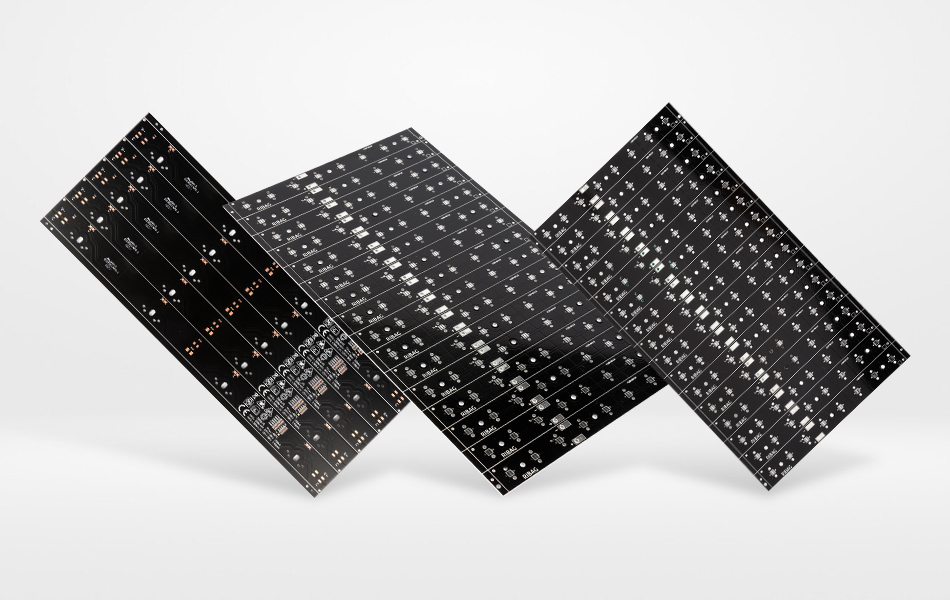
Diverse Applications of Aluminum PCBs
LED Lighting: Illuminating the Way
LED lighting represents one of the most significant application areas for aluminum PCBs. LEDs, although highly efficient light sources, generate a substantial amount of heat during operation. Effective heat management is crucial for maintaining their performance and extending their lifespan.
Aluminum PCBs provide an efficient solution for heat dissipation in LED lighting applications. They are utilized in a wide range of LED products, from residential and commercial lighting fixtures to automotive headlights, streetlights, and large - scale architectural lighting installations. Their ability to be customized in terms of size, shape, and thermal performance makes them adaptable to diverse lighting requirements, whether it's creating ambient lighting in a home or providing intense, focused illumination on a city street.
Automotive Electronics: Driving Innovation
The automotive industry has witnessed a rapid proliferation of electronics, and aluminum PCBs have become an integral part of this trend. Modern vehicles are equipped with a plethora of electronic systems, including engine control units, power inverters, battery management systems, and advanced driver - assistance systems (ADAS).
These systems generate significant heat and must operate reliably in harsh environments characterized by extreme temperature fluctuations, vibrations, and exposure to moisture and dust. Aluminum PCBs, with their high thermal conductivity, mechanical strength, and resistance to environmental factors, ensure the reliable operation of automotive electronics. They contribute to enhancing vehicle safety, performance, and fuel efficiency, while also enabling the development of more compact and integrated automotive electronic systems.
Industrial Electronics: Powering Industry
In the industrial sector, aluminum PCBs are widely employed in various applications, such as motor drives, industrial control systems, power supplies, and automation equipment. Industrial environments are often fraught with challenges, including high levels of dust, moisture, chemicals, and extreme temperatures, which can pose significant threats to the operation of electronic components.
Aluminum PCBs are engineered to withstand these harsh conditions while effectively managing the heat generated by components. Their robust design and excellent thermal management capabilities ensure the continuous and reliable operation of industrial equipment, reducing downtime and minimizing maintenance costs. They are also well - suited for power - intensive industrial applications due to their ability to handle high power densities.
Consumer Electronics: Enhancing User Experience
With the surging demand for high - performance consumer electronics devices, such as smartphones, tablets, laptops, and gaming consoles, aluminum PCBs are increasingly finding their way into these products. These devices are packed with powerful processors, graphics cards, and other components that generate substantial heat during operation, especially when performing resource - intensive tasks.
Aluminum PCBs help dissipate this heat, enabling the devices to operate at optimal temperatures. This not only improves the performance and user experience but also extends the lifespan of the devices. Their thin and lightweight nature is also highly desirable for the sleek and compact designs of modern consumer electronics.
Aerospace and Defense: Mission - Critical Applications
In the aerospace and defense sectors, where reliability and performance are of utmost importance, aluminum PCBs are utilized in critical applications, including avionics systems, radar systems, communication equipment, and military - grade electronics.
These applications often involve operating in extreme conditions, such as high altitudes, rapid temperature changes, intense vibrations, and exposure to radiation. Aluminum PCBs' exceptional thermal management, mechanical strength, and reliability make them indispensable for ensuring the proper functioning of critical electronic systems, which is essential for mission success and the safety of personnel.
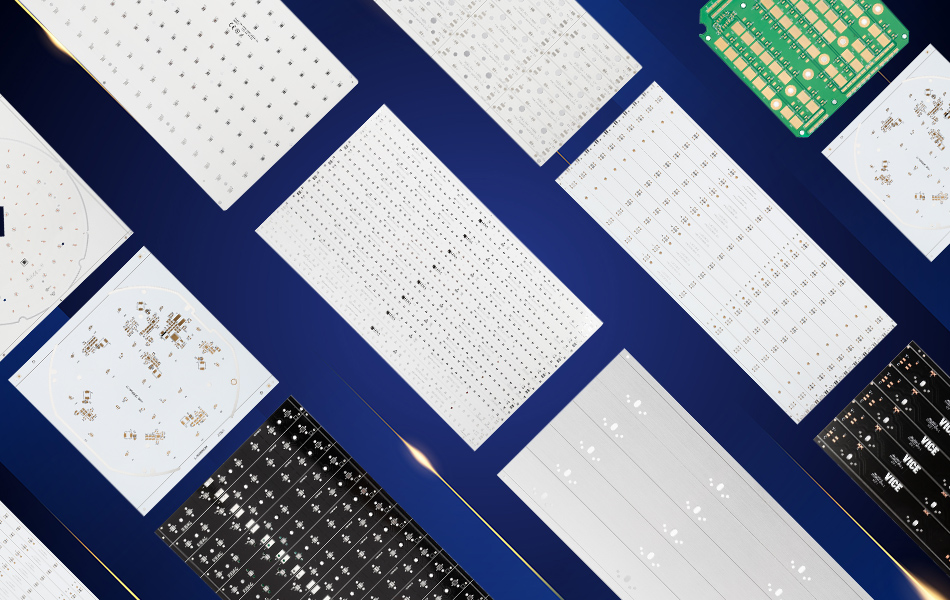
Market Trends Shaping Aluminum PCBs
Market Growth Catalysts
The global market for aluminum PCBs has been experiencing robust growth in recent years, and this upward trajectory is expected to continue in the foreseeable future. Several factors are driving this growth.
The escalating demand for high - performance electronic devices across multiple industries is a major growth driver. As electronics become more powerful and compact, the need for efficient heat management solutions becomes increasingly critical, and aluminum PCBs offer an effective answer. Additionally, the emergence of cutting - edge technologies such as 5G, the Internet of Things (IoT), artificial intelligence, and autonomous vehicles is creating new opportunities for the growth of the aluminum PCB market. These technologies demand advanced PCBs with superior thermal and electrical performance, further fueling the market expansion.
Regional Market Dynamics
The market for aluminum PCBs is geographically diverse, with different regions playing distinct roles. The Asia - Pacific region currently dominates the global market, primarily due to its strong manufacturing base, large domestic market, and rapid growth in the consumer electronics and automotive industries. China, in particular, stands out as a major player, holding a significant share in both production and consumption.
North America and Europe also hold important positions in the market, especially in high - end applications such as aerospace, defense, and automotive electronics. These regions are known for their emphasis on quality, innovation, and reliability, which drives the demand for high - performance aluminum PCBs. The Middle East, Africa, and Latin America are emerging markets, with growing investment in infrastructure development, smart city projects, and the expansion of the electronics industry, which is expected to fuel the demand for aluminum PCBs in the coming years.
Competitive Landscape: Navigating the Market
The market for aluminum PCBs is highly competitive, with numerous companies vying for market share. Key competitors differentiate themselves through product quality, technological innovation, cost - effectiveness, and customer service.
Some companies specialize in serving high - end niche markets, such as aerospace and defense, where strict quality and reliability standards prevail. These companies invest heavily in research and development to stay at the forefront of technological advancements and meet the unique requirements of these demanding applications. Other companies target the mass - market applications in consumer electronics and LED lighting, leveraging their cost - efficient production capabilities and economies of scale to offer competitive pricing.
New entrants are constantly emerging in the market, bringing with them innovative technologies and business models. This intensifies competition and drives continuous innovation, ultimately benefiting the entire industry. As the demand for aluminum PCBs continues to grow, companies will need to adapt and evolve to remain competitive in this dynamic market landscape.
In conclusion, aluminum PCBs have firmly established themselves as a vital component in the modern electronics industry. Their unique combination of thermal management, mechanical strength, and design flexibility makes them indispensable across a wide spectrum of applications. As technology continues to progress at an unprecedented pace, the demand for aluminum PCBs is set to soar. Manufacturers will need to focus on continuous innovation, quality enhancement, and cost - optimization to meet market demands and thrive in the highly competitive electronics industry. The future of aluminum PCBs looks promising, as they are poised to play an even more significant role in powering the next generation of electronic devices.

Got project ready to assembly? Contact us: info@apollopcb.com



We're not around but we still want to hear from you! Leave us a note:

Leave Message to APOLLOPCB
